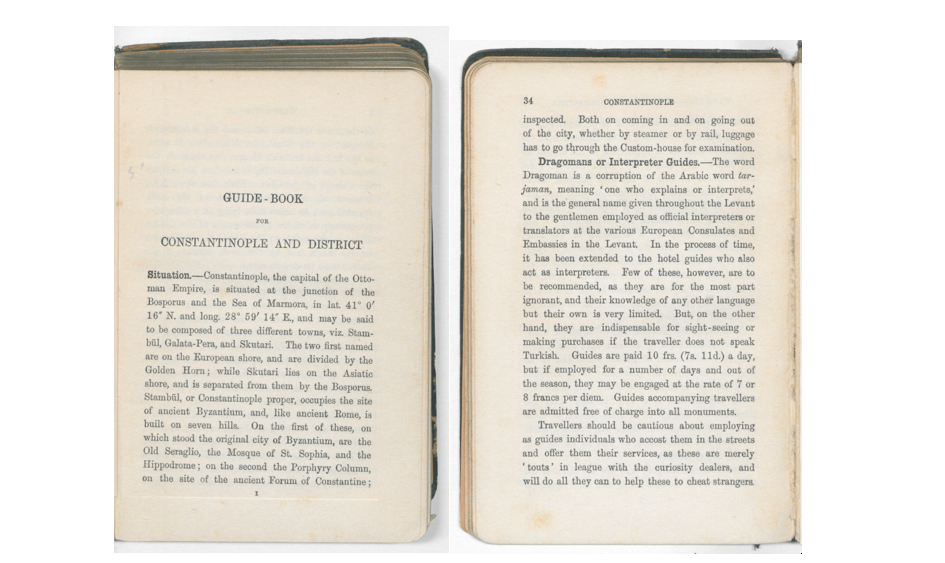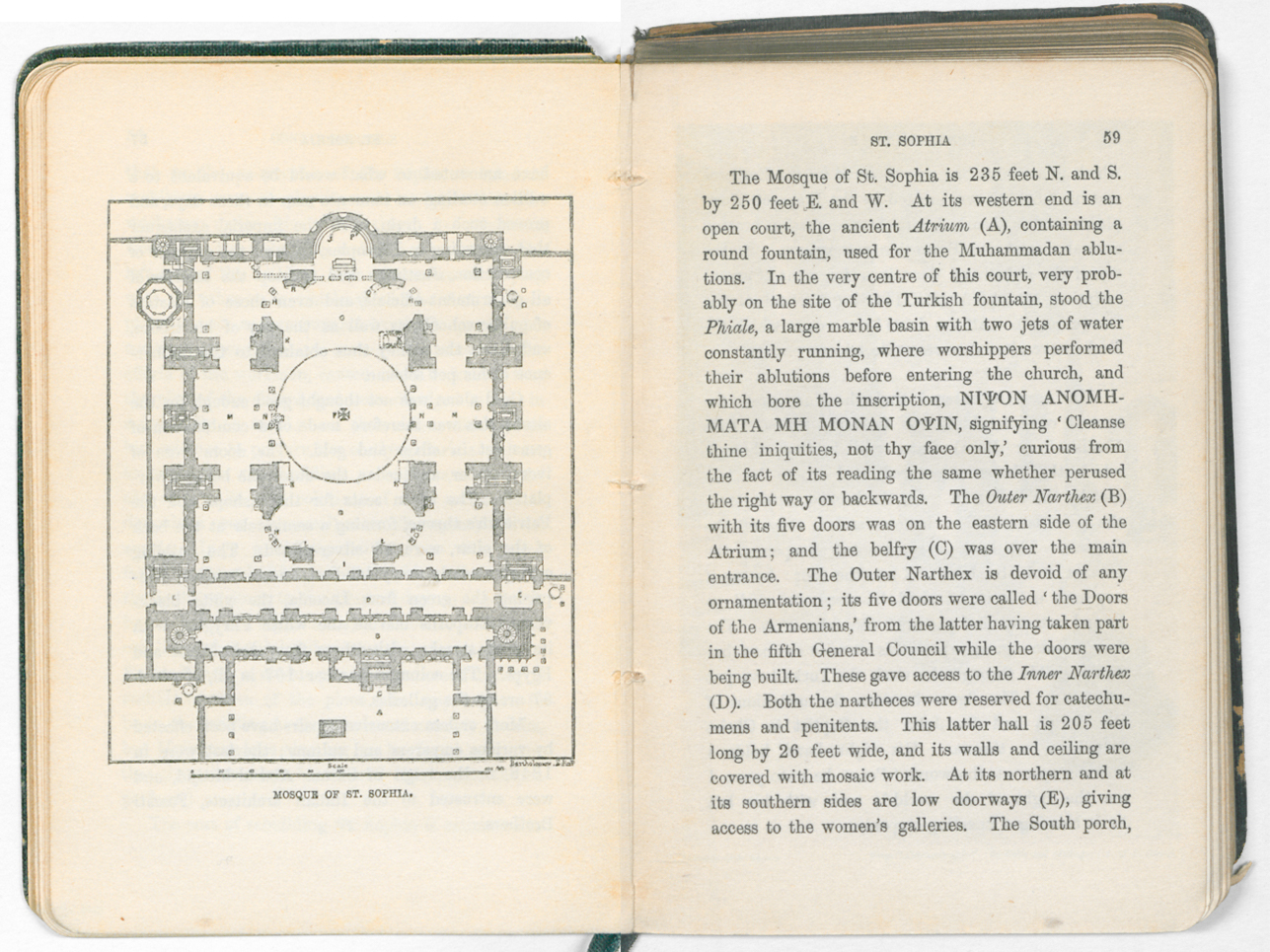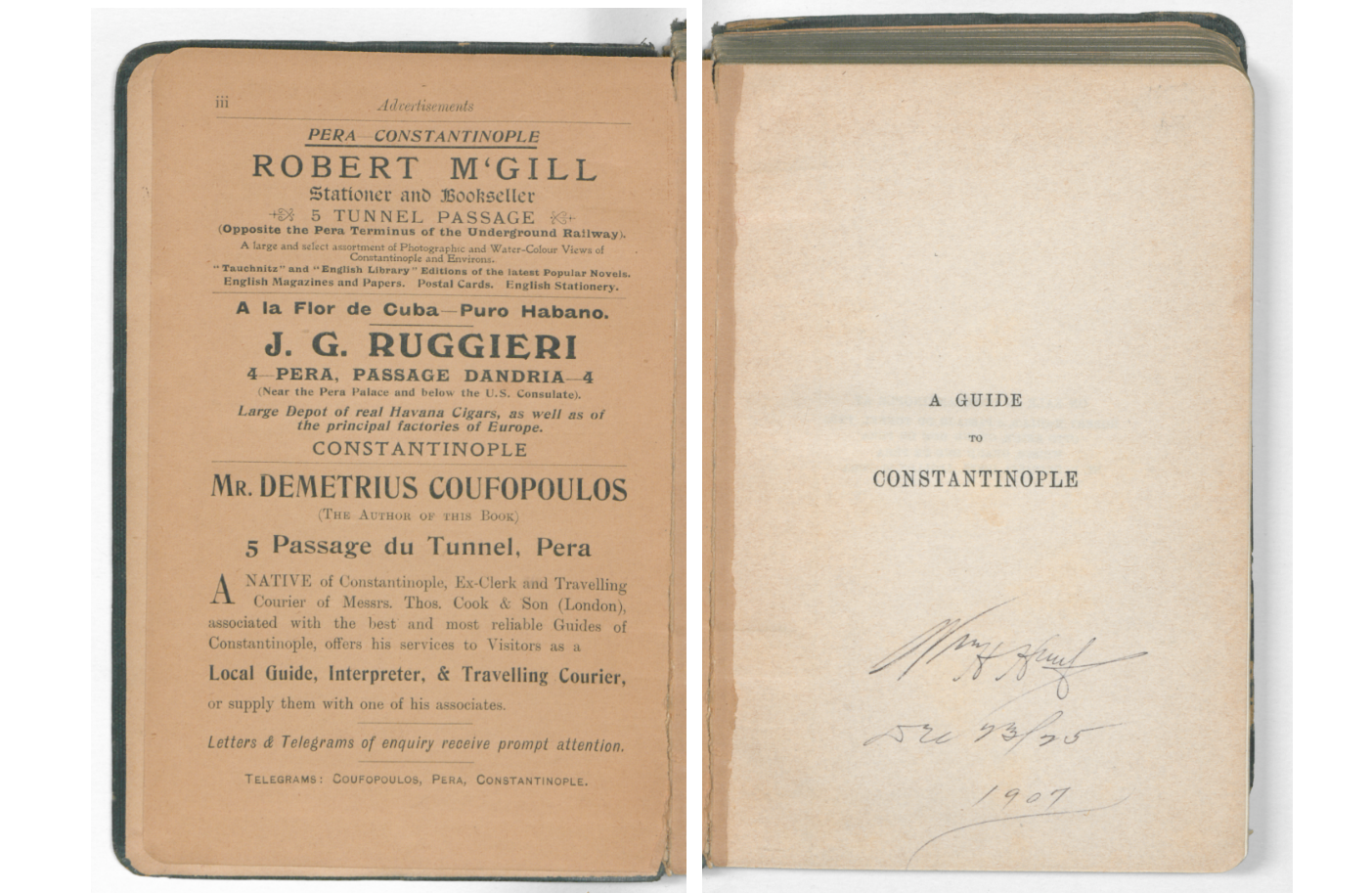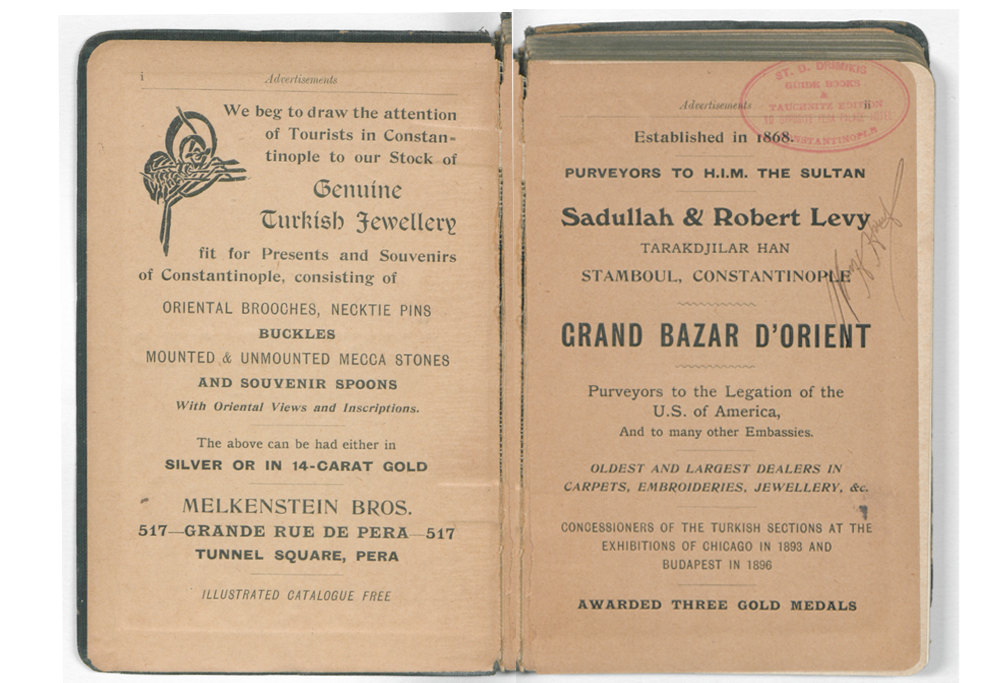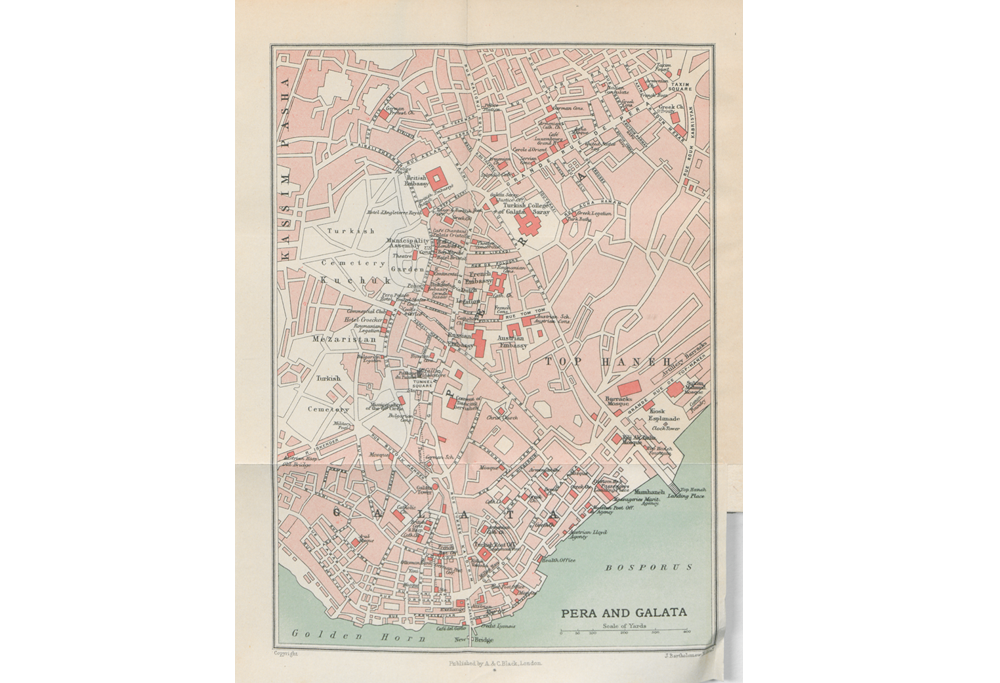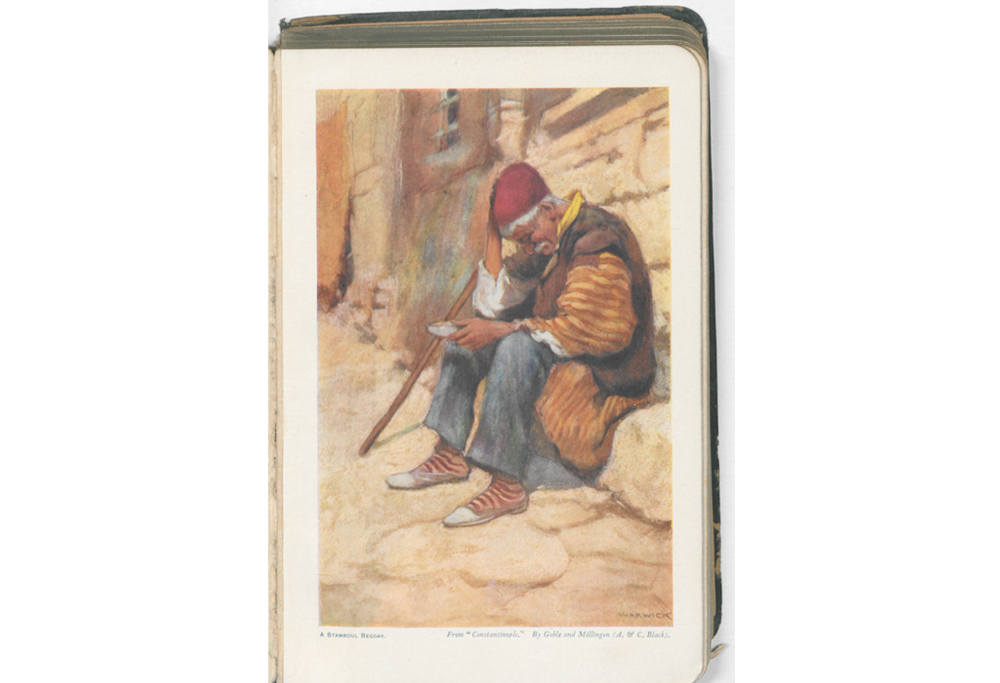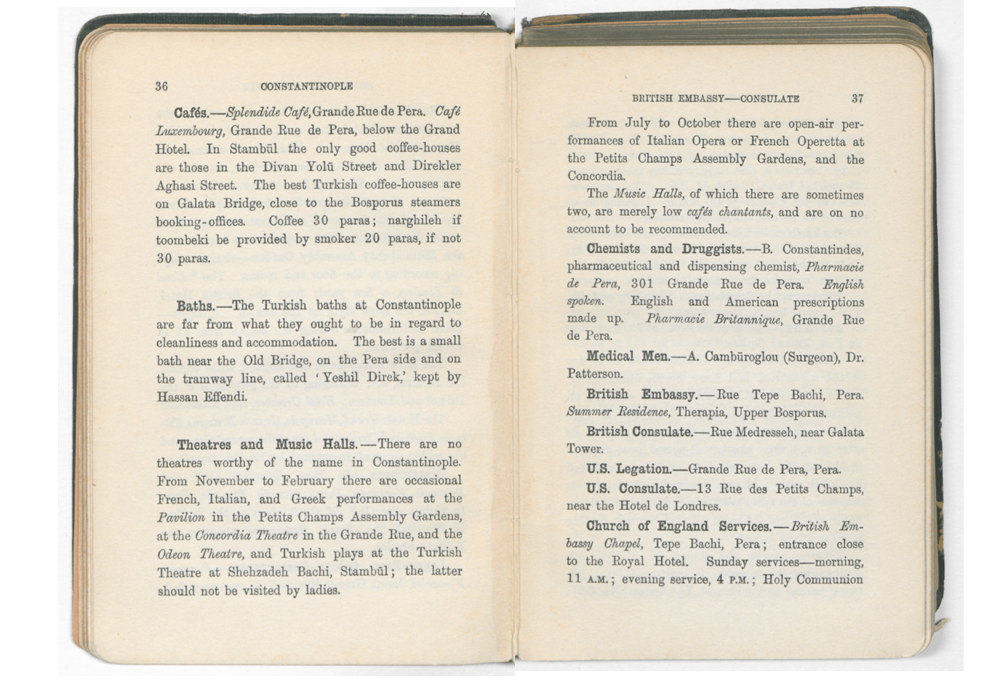Istanbul from the Footsteps of Travelers, Through the Eyes of The Tourist Guides! I – A Guide to Constantinople, Demetrius Coufopoulos
Guides were also preferred by travelers other than observations and memoirs in the 19th century. These guides, which contain practical information, tips and warnings about places to visit , were prepared to guide those who want to get to know new cities and those who will set off. They were intended to make the lives of travelers and tourists easier, by including information such as hotels, restaurants, transportation and sightseeing routes. [1] The first book prepared for travelers and tourists who wanted to travel to the Ottoman Empire was “a Handbook for Travelers in the Ionian Islands, Greece, Türkiye, Asia Minor and Istanbul in 1840”. It was published by John Murray Publishing House in London. [2] After publishing the first travel guide in 1840, Murray shares details about Istanbul in the guides he published in 1845, 1854, 1878, 1893, 1895 and 1900. [3] In addition, Bradshaw published the “Hand-Book to the Turkish Empire” in 1870, “Konstantinopel und das westliche Kleinasien: Handbuch für Reisende” in 1905, “Harper’s Hand-Book for Travelers in Europe and the East” in 1862, 1871 and 1875 . [4]
In the first part of our digital exhibition, we will exhibit a guide titled “A Guide to Constantinople” [5] which was published by Demetrius Coufopoulos in 1895. Second, third and fourth editions of the book were made in 1899, 1906 and 1910. [6] The guide which was used in our exhibition is the 1906 edition. Coufopoulos states that at the beginning of his 1906 printed guide, he is from Istanbul and was a clerk in the past. He writes that he was a translator and tourist guide and his address is “5 passage du Tunnel Pera”. In his guide, Coufopoulos describes Istanbul from a topographic and historical perspective. He gives practical information for the visitors to the city. Our local guide, which includes information about Splendid Café, Café Luxembourg, coffee houses, Turkish baths, Odeon Theatre, Concordia Theater and the Turkish Theater in Şehzadebaşı, also gives information about pharmacists, doctors and embassies for the travelers so that they do not get into a difficult situation. Coufopoulos states that the watercolor paintings in his book are from Professor Alexander Van Millingen’s book called “Constantinople” and that the paintings belong to Warwick Goble. We have the chance to get some clues about the daily life of Istanbul in the paint pictures he used in his guide.
While Demetrius Coufopoulos presents the beauties of the city to travelers and shares practical information about the city he managed to create a valuable work depicting Istanbul to future generations. As the “Following the Foot steps of Travelers …” project team, we wish you will manage to discover Istanbul step by step with our digital exhibition consisting of these two guides which are included in the Suna Kıraç Library Rare Material Collection .
